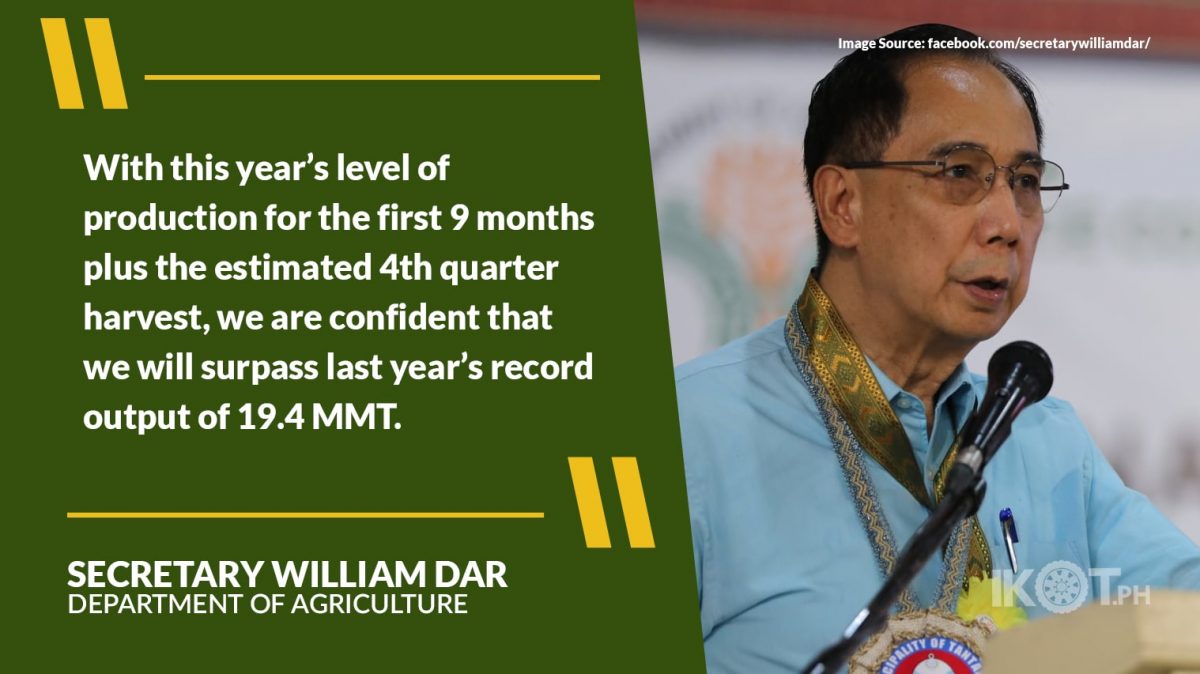The country’s rice production is on track for another record year, mainly because of government interventions, continued funding support from rice tariffs, and favorable weather.
“Barring adverse weather conditions for the remaining weeks of the year, we are confident that we will hit another record palay (paddy rice) production this year,” said Agriculture Secretary William Dar.
“Our farmers were encouraged to plant early, enabling them to harvest before the end of September, thus avoiding the typhoons in October.”
“As we were able to distribute on time needed inbred seeds and other inputs — under President Duterte’s Philippine Integrated Rice Program (PIRP) and Rice Competitiveness Enhancement Fund (RCEF) — our farmers were encouraged to plant early, enabling them to harvest before the end of September, thus avoiding the typhoons in October,” Dar added.
Palay production for the third quarter (Q3) of the year would reach 3,752,730 metric tons (MT), which is 6.7 percent (%) more than last year’s Q3 harvest of 3,516,346 MT, according to initial estimates of the Philippine Statistics Authority (PSA).
Combining the Q3 output with the previous harvests in Q1 and Q2, the total palay production for January to September 2021 amounts to 12.55 million MT, which is 5.5% more than the previous nine-month harvest in 2020, at 11.90 MMT, and 10.9% more than in 2019, at 11.32 MMT, based on PSA estimates.
“With this year’s level of production for the first nine months plus the estimated fourth quarter harvest, we are confident that we will surpass last year’s record output of 19.4 MMT,” said the agriculture chief, citing the report of DA-PIRP Director Dionisio Alvindia.
Averaging the previous fourth quarter (Q4) production in 2020 (at 7.39 MMT) and 2019 (at 7.49 MMT), Alvindia said “we expect to harvest at least 7.4 MMT, bringing the total 2021 palay output at 19.95 MMT.”
“It is more likely that we would hit the 20-million metric ton level this year.”
“Hence, it is more likely that we would hit the 20-million metric ton level this year,” said the agriculture head, adding that this is all due to the hard work of our farmers, and sustained strong support of the local government units and the private sector.
In addition to the RCEF, the PIRP includes the DA regular rice program and the Rice Resiliency Project that cover non-RCEF areas.


